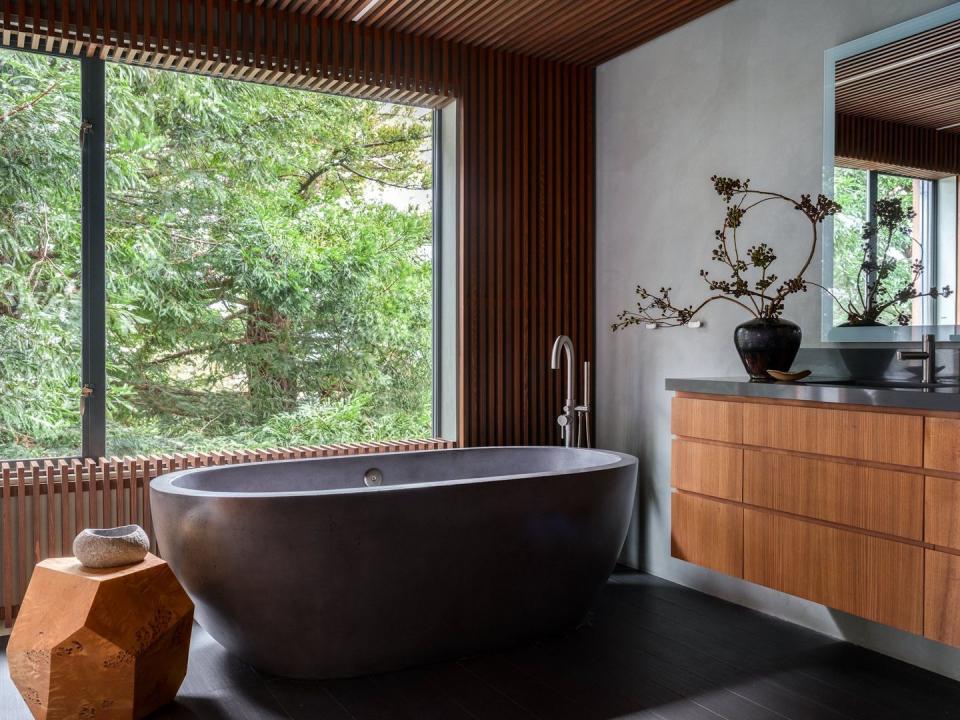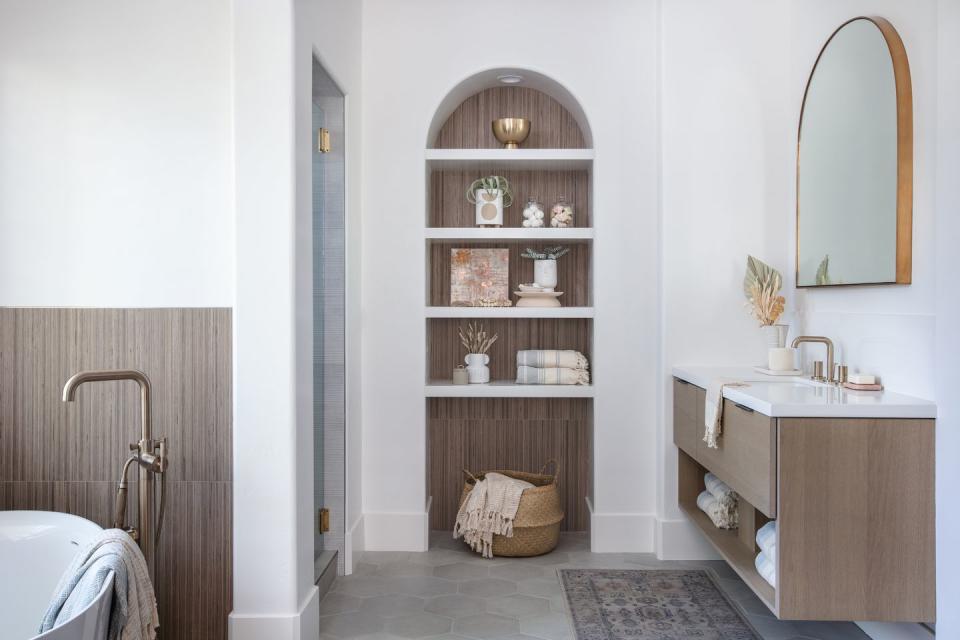Japandi Style Is the Secret to a Calming Atmosphere in Your Home

Japandi style encompasses the beauty and minimalistic nature of Scandinavian and Japanese design styles. Its known features center around nature, functionality, minimalism and neutral color palettes. Over 150 years old, this design and lifestyle is widely celebrated internationally for emphasizing easy, breezy comfort.
With strong historical roots, Japandi style's global attraction begins to trend as minimal decor and homes filled with natural elements grow popular. Jennifer Verruto, Founder & CEO, Blythe Interiors, says, "We are seeing more and more people gravitate towards the elegant simplicity and calming atmosphere of Japandi.”
Timeless and simplistic, Japandi style sets the pace of your living space. Earthy and organic, craftmanship in your decor can shine through due to the pared-back ethos of not overcrowding your space with objects or tons of color. Ahead, learn why interior designers will continue to sing their praises of the over a century-old style.
What Is Japandi Style?
Japandi style harmoniously blends the most distinct and favored features in Japanese and Scandinavian cultures. Peak Petersen, senior interior designer at Hoedemaker Pfeiffer, says, "The focus of these combined aesthetics is tranquility and functionality and is often defined by natural materiality, a neutral palette with dark, earthy tones, uncluttered space that is not overly minimal, natural light and greenery, bringing nature into the home."
But the re-emerging interest around Japandi goes beyond the surface. Carrying the spirit of feng shui and Scandinavian hygge principles, the design sets the environment and mood in your home. The crisp but laid-back look lends a relaxing and warm feel to your space. Unwinding will look better and not cluttered!
Peter Spalding co-founder and CCO, Daniel House Club says, “Both cultures have a less-is-more mentality and both continue to foreground handmade objects. More than their aesthetics, it is their ethos that unites them.”
Why Japandi Design Is Effective

Petersen loves how Japandi style adds depth to the bright, clean Scandinavian “hygge”-influenced canvas (next-level coziness that causes you to feel contentment). You can enjoy the warmth without feeling closed in, thanks to the freeing nature of Japanese aesthetics it's all about balance! "The inclusion of darker tones, meaningful artwork and found pieces create a lifetime ethos that will continue to be interesting," Petersen explains.
The overall soothing ambiance it provides is welcoming and can create a sense of calm even after a hectic day. Inviting guests over in a tranquil setting that promotes their well-being can also make entertaining feel zen. Simply, pop the open the dishwasher and enjoy an evening of relaxation when the party is over.
Finally, you can indulge in your favorites without settling or feeling overwhelmed. “Japandi fuses the comfy rusticity of Scandinavian design with the Japanese celebration of imperfection as beauty," says Spalding. "It is crisp and clean, but not sterile. Its palette is subtle, but never cold. It celebrates the handmade over the mass-produced."
How to Use Japandi Style in Your Home
Japandi style can fit in just about anywhere in your home from the bathroom (your spa days have never looked so good) to the kitchen, but it's done best in places enjoyed by friends and family.

In the primary bathroom (pictured above), Verruto carefully blended warm and cool tones to create an environment of balance and serenity. "The design team revitalized the existing archway through thoughtful finishes, incorporating porcelain tile that mimics the look of thin wood slats—embodying the minimal, natural aesthetic of the style,” she explains.
If you're hoping to achieve this aesthetic, begin to draw back the curtain and let the light in. Paint with limewash for an organic, textured feel. Shop for high-quality vintage furniture made of wood or clay for a stylish moment that won't get lost in a crowd of accessories.
This trend allows you to start afresh in your home, boosting your sense of peace no matter the season. Spalding says, "I like that Japandi style presents its origins so completely. It gives us the opportunity to delve deep and explore work we are not that familiar with and make it our own.”
Cheers to the start of something new that feels right at home!
You Might Also Like


